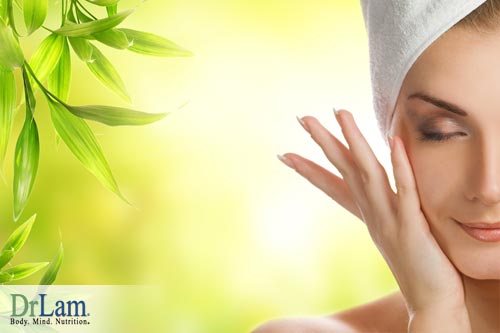 The aging of our skin can be divided into two broad processes: Chronological Aging and Photo-Aging. But can we reverse aging skin?
The aging of our skin can be divided into two broad processes: Chronological Aging and Photo-Aging. But can we reverse aging skin?
Chronological aging represents the structural, functional, and metabolic changes in the skin that parallel the aging and degenerative changes in other body organs. Symptoms of chronological aging include:
Dry and Thin Skin. While young skin renews itself every three to four weeks, older skin takes four to six weeks to renew itself. The top layers lose more moisture due to the aging process, and older skin has a dryer and more dehydrated appearance. The good news is that it is possible to reverse aging skin.
Fine Wrinkles. Diminished production of collagen leads to fine wrinkles initially observed around the eyes (commonly known as "crow's feet"), forehead, and other sun-exposed areas. More pronounced effects include furrows at the site of facial expression lines and sagging folds over the eyelids, neck, jaw, and arms. For many years, it was thought that one could not reverse aging skin. Though with a clear understanding of the process of aging, research has shown that it is possible to reverse aging skin.
Abnormal Blood Vessels. Within the many small, delicate blood vessels supplying nutrients to the skin, abnormalities develop. This is particularly conspicuous over the nose and cheeks.
Age Spots. These are pigmentations that surfaced as a result of a decrease in the number and function of pigment cells in sun-exposed areas. Preventing sun damage is important in long term skin care and may decrease the need to reverse aging skin in the future.
Benign and malignant skin tumors due to the deterioration of the skin's immune system.
So, what does this all mean? Is is possible to reverse aging skin? Yes, it is possible to reverse aging skin. Successful restoration of youthful skin from this perspective must address a variety of key issues including: collagen replacement, strengthening the vascular walls of small blood vessels that supply the skin, increasing vascular supply for oxygenation and detoxification purposes, increasing immunity to reduce cancer risks, and reducing oxidative damage to the skin
Photo-aging is a separate process and largely involves damage to the collagen and elastin fibers in the skin. While genetics play a significant role, the amount of wrinkles present is highly dependent on the amount of sun exposure. The lines in a "lived-in face," especially for those who spend a considerable amount of time outdoors, is a consequence of oxidative damage due to overexposure to ultraviolet (UV) sunlight - both UVA (responsible for tanning, wrinkling, and melanoma) and UVB (responsible for sunburn and basal and squamous cell carcinoma). UV light may further damage skin by increasing the production of proteolytic enzymes that break down collagen, the connective tissue located beneath the dermis.
Successful retardation of photo-aging can be achieved by wearing a sunscreen of SPF of 15 or more, and by avoiding direct and indirect exposure to the sun for extended periods of time.
The skin is made up of multiple layers of cells that are constantly going through self shedding and regeneration once every 30 days or so in repeated cycles. The layers can be broadly divided into two sections - the top epidermis and the underlying dermis.
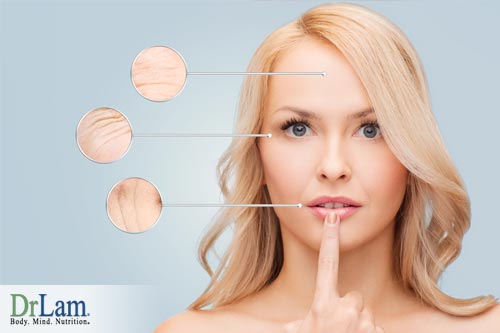 Histological studies of the skin show that a wrinkle is formed following a series of major cellular changes:
Histological studies of the skin show that a wrinkle is formed following a series of major cellular changes:
During the sub-clinical phase of aging (from age 35-45), there is a gradual and progressive slowing of cellular turnover and regeneration. This results in the skin getting thinner. As a result, the normally undulating ridge-like dermal-epidermal interface (DEI) becomes flatter. This flatness reduces the surface area of nutritional exchange between the underlying dermis on the bottom and the epidermis on top.
Reduced nutrition to the epidermis from aging is one factor that causes cellular exhaustion and weakness. Without proper nutrition to the epidermis, cellular metabolism of the epidermal cell is slowed. Furthermore, the transportation of certain unwanted byproducts of cellular metabolism such as free radical is reduced. The accumulation of such free radicals within the cell can lead to undesirable mutational damages in the cell and ultimately cancer.
The adhesion between in the DEI is normally supplied by collagen IV (a multi-sheet structure or basal layer) and collagen VII (anchored to the sheets structure). The progressive loss of nutrients to this area slows the circulation of the messengers that serve to promote the neo-synthesis process of such collagen. A vicious cycle is set up. Without an optimal amount of collagen, the skin sags even more, propagating the dearth of nutrients. At this point, many poeple begin to look for ways to reverse aging skin and regain their youthful appearance.
Paradoxically, matured aging skin contains more elastin, which the body uses to fill in the empty space left by the deficiency of collagen. Such elastin, unfortunately, is fragmented, calcified, and contains excessive lipids.
In addition to the loss of skin thickness due to lack of collagen support, the aging skin is more loose and lacks elasticity. These two properties are hallmarks of wrinkles.
This process of aging and appearance of wrinkles is accelerated during the clinical phase of aging (age 45 and higher). By age 50, very few women can escape wrinkles. The difference only lies in the degree of the blemish.
A wrinkle, very simply, is caused by the reduction of collagen. Understanding the role of collagen helps to find ways to reverse aging skin.
Collagen is a major body protein. There are 19 forms of collagen, and it accounts for almost 20% of the total protein in our body. In addition to its critical role in forming support structure of the skin, it is also the main constituent of the extra-cellular matrix.
Collagen is characterized by its high proline content, which constitutes about one third of the amino acids. Its triple helix, rope-like structure contains protein organized in bundles that are anchored to each together at right angles and held in place by inter-fiber cross linkages. The most abundant collagen is Type I Collagen.
The spatial arrangement of the collagen network also depends on the presence of supporting macromolecules known as proteoglycans and glycoaminoglycans (GAGs).
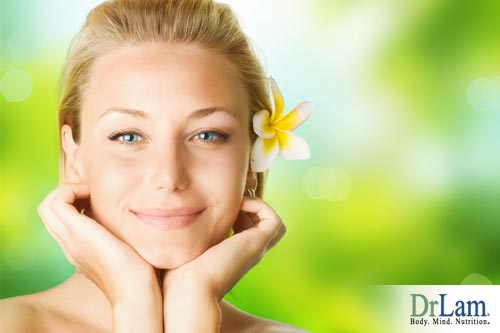 Collagen is a much better support structure than GAGs. GAGs are a water-saturated gel in which water soluble molecules, hormones, peptides, and ions circulate. During the aging process, the diminished amount of collagen is gradually replaced by the weaker GAGs. This reduction in the quantity of collagen and replacement with alternative but weaker macromolecules results in skin that is less thin and less elastic. With age, this gel, due to its weak support structure, tends to sag, and cellular metabolism and mitosis is compromised. Furthermore, if water intake is insufficient, the links in the collagen network, like those of a net cast into the sea, collapse as the net is only "kept open" in the presence of water and collapses upon itself in a dehydrated environment.
Collagen is a much better support structure than GAGs. GAGs are a water-saturated gel in which water soluble molecules, hormones, peptides, and ions circulate. During the aging process, the diminished amount of collagen is gradually replaced by the weaker GAGs. This reduction in the quantity of collagen and replacement with alternative but weaker macromolecules results in skin that is less thin and less elastic. With age, this gel, due to its weak support structure, tends to sag, and cellular metabolism and mitosis is compromised. Furthermore, if water intake is insufficient, the links in the collagen network, like those of a net cast into the sea, collapse as the net is only "kept open" in the presence of water and collapses upon itself in a dehydrated environment.
Fibroblasts are mesanchymatous cells within the dermatological meshwork. They are the basic building blocks involved in numerous mechanisms, including fibrogenesis, tissue contraction, and tissue skeleton building. They also have a role in epithelial differentiation, leading to collagen formation. After tissue damage has occurred, whether it be through acute forces such as trauma, or chronic forces such as aging, stress, and oxidative damage, the fibroblasts possess an unique ability to change their phenotype and become myofibroblasts, thereby contributing actively to the repair process. In the case of wound injury, it would form granulation tissue to enhance wound contraction and synthesis of macromolecules in connective tissue such as GAGs.
Researchers have observed for years that fibroblasts in aged tissue do not produce as much collagen. However, after they have been isolated from their tissue and exposed to endogenous stimulating factors such as TGFb, they once again produce significant amounts of collagen, especially Type I Collagen (the predominant collagen in reconstructed healthy skin) based on a good DEI (where collagens IV and VII are abundant).
Successful stimulation of fibroblast to produce more collagen and GAGs endogenously will in effect reverse aging skin. Wrinkles will disappear and skin thickness will increase. There is currently much research in the area of skin care and how to reverse aging skin.
Currently, two approaches have been clinically proven to be successful to reverse aging skin:
1. Stimulate the central hormonal system to increase Growth Hormone secretion. Growth hormone is the master hormone that will in turn promote fibroblasts to produce more collagen throughout the body and reverse aging skin.
2. Stimulate selected parts of the body, such as the face or neck, to produce more collagen through exposing the area topically to certain nutrients called Secretagogues.
Let us take at look at one of these approaches more closely.
Human growth hormone (hGH) is a small protein molecule, which contains 191 amino acids in a single polypeptide chain. It is the most common hormone secreted by the anterior pituitary gland. For some reason unknown, the amount of growth hormone secreted starts to slow after peaking in the late teens. The measurable level of hGH in our body decreases 14 percent every ten years into old age after peaking. This reduced level of secretion occurs over a period of time, with concurrent signs of aging appearing. Daily secretion from the pituitary gland diminishes with age to the extent that a 60-year-old man secretes only 25 percent of the hGH secreted by a 20 year old adult.
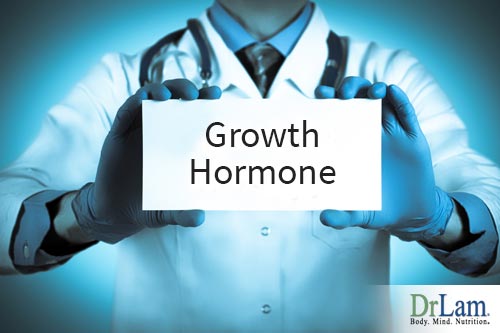 A landmark study conducted by the late Dr. Rudman and published in the prestigious New England Journal of Medicine showed that the effects of six months of human growth hormone injection on lean body mass, skin thickness, and adipose-tissue mass were equivalent to 10 to 20 years of reversed aging. Specifically, skin thickness, as measured from 4 different sites, increased by 7.1% during this period on subjects in the study. This research is promising in the studies to reverse aging skin.
A landmark study conducted by the late Dr. Rudman and published in the prestigious New England Journal of Medicine showed that the effects of six months of human growth hormone injection on lean body mass, skin thickness, and adipose-tissue mass were equivalent to 10 to 20 years of reversed aging. Specifically, skin thickness, as measured from 4 different sites, increased by 7.1% during this period on subjects in the study. This research is promising in the studies to reverse aging skin.
Since that study, many people have undergone growth hormone injections as a way to regain their youthfulness and reverse aging skin. Thicker skin is just one of many benefits. Growth hormone injections were approved by the FDA in the mid 1990s for treatment of adult growth hormone deficiency syndrome. Growth hormone is a drug requiring close supervision by a qualified physician. As with most drugs, side effects can and do occur with growth hormone injections, including fluid retention and carpal tunnel syndrome.
Many have tried to apply this hormone topically to reverse aging skin. Human growth hormone, like collagen, is too large a molecule to be absorbed by direct application onto the skin. It is therefore not suitable for dermatological use and will not aid to reverse aging skin when applied topically.
The mission of any successful anti-aging skin regimen must address, in addition to increased collagen synthesis, ways to limit the amount of oxidative damage caused by environmental pollutions and the sun's ultraviolet rays on our skin.
The following are key ingredients with antioxidant properties that should be topically applied in conjunction with a good water-based moisturizer to nourish the skin from the outside in, reverse aging skin, and to prevent oxidative damage.
Used by the great Egyptian and Mayan civilizations, the extract of lupin, called lupaline, has been scientifically proven to be 10,000 more potent than the single use of Vitamin E, 5000 times more effective than Vitamin C, and 2 times more effective than Vitamin B. Lupaline helps to combat the signs of aging and reduces the damaging effects of free radical breakdown and environmental pollutions. This product is naturally derived from the synergetic combination of Lupin oil and the active fraction of wheat germ oil obtained by molecular distillation.
In a normal cell, tiny organelles called mitochondria turn food molecules into energy. In the process, a free radical oxygen called superoxide is produced, which causes what is called oxidative stress damage. Superoxide dismutase (SOD) is an enzyme that revitalizes cells and reduces the rate of cell destruction. It neutralizes this most common, and possibly the most dangerous, free radical - superoxide. It converts the reactive oxygen species by converting superoxide radical into hydrogen peroxide, which is then changed into molecular oxygen and water.
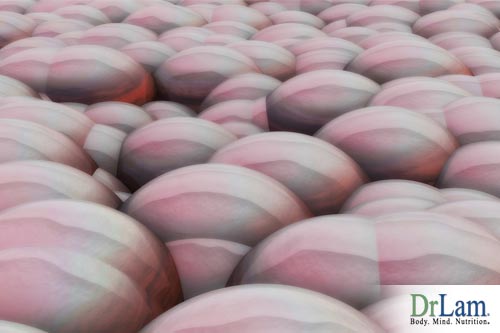 SOD levels tend to decline with age, while free radical production increases. Its potential as an anti-aging treatment has been well documented. Compounds that mimic SOD have been shown to extend the lifespan of experimental worms by nearly 50 percent, according to researcher Simon Melov of the Buck Institute for Age Research in Novato, California.
SOD levels tend to decline with age, while free radical production increases. Its potential as an anti-aging treatment has been well documented. Compounds that mimic SOD have been shown to extend the lifespan of experimental worms by nearly 50 percent, according to researcher Simon Melov of the Buck Institute for Age Research in Novato, California.
Biologist William Orr of Southern Methodist University reported in 1997 that genetic engineering of fruit flies live longer. Flies that normally live about 45 days lived about 75 days when their cells produced more of the same two natural enzymes, called superoxide dismutase and catalase.
This is a traditional herbal oil that has been used for centuries for skin burns, cheoloids, and scars. It is extracted from the seeds that form in the hips of the wild rose of Chile - Rosa Affinis Rubiginosa, or commonly known in Chile as Rosa Mosqueta. It smoothes wrinkles by hydrating the skin, appears to reverse aging skin, and slows new signs of aging. Rose hip oil is extremely high in essential fatty acids such as Linoleic acid (45%), Linolenic acid (32%), Oleic acid (15%), and Palmitic acid. Fatty acids are essential building blocks of cellular membranes to allow efficient transportation of nutrients from the extracellular space into the intracellular environment where metabolism takes place. Besides non-saturated fatty acids, the presence of carotenoids, flavonoids, Vitamin C, and, trans-retinoic acid has also been detected and these could be responsible for some of the pharmacological and therapeutic properties of Rosehip Seed Oil.
Extensive studies have shown rosehip seed oil to have a positive effect on scars, stretch marks, and sunburn, and may reverse aging skin. Because of its high fatty acid content, Rosehip seed oil penetrates the skins upper layers very quickly, making it a good moisturizer.
Squalane is an excellent moisturizer and lubricant. It is highly compatible with skin lipids because human sebum is comprised of 25% squalane. Squalene is obtained by hydrogenation of natural oils. However, most people do not synthesize enough of this vital oil, which can lead to rough, dry aging skin.
Since squalane is a natural component of the human sebum, it acts as a mild liquid vehicle able to impart suppleness and smoothness to the skin without any unpleasant greasy feel. It readily forms emulsions with the human sebum.
Squalane assists in preventing water loss from the skin's surface. This in turn causes hydration of the skin and increases the percutaneous absorption of incorporated active substances. It restores suppleness of skin, helps to reverse aging skin, and creates smoothness to skin dried by frequent use of detergents or by sunburn.
Retinoic acid precursors and derivatives have been used effectively since the 1980s to stimulate the increased turnover of aging keratinocytes. Retinoids repair the skin's connective tissue as well as reduce pigmentation, increase blood supply, and normalize skin turnover.
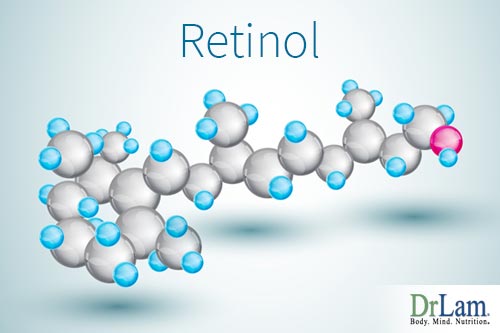 The FDA approved topical retinoic acid in 1995 for improving the appearance of photo-aged skin. Retinol helps to reverse aging skin and reduces fine facial wrinkles, hyper-pigmentation (age spots), and surface roughness associated with chronic sun exposure. The drug sloughs off dead skin, regenerates collagen, and allows cells in the top layer of the skin, which are always being replaced, to mature more normally than untreated sun-damaged cells.
The FDA approved topical retinoic acid in 1995 for improving the appearance of photo-aged skin. Retinol helps to reverse aging skin and reduces fine facial wrinkles, hyper-pigmentation (age spots), and surface roughness associated with chronic sun exposure. The drug sloughs off dead skin, regenerates collagen, and allows cells in the top layer of the skin, which are always being replaced, to mature more normally than untreated sun-damaged cells.
There is evidence that retinol actually prevents sun damage. Researchers have found that even brief exposure to sunlight increases the activity of enzymes that break down the proteins collagen and elastin that provide structural support for the skin. Creams containing trans-retinoic-acid reduce the activation of these enzymes.
Side effects of retinoic acid for topical application include temporary peeling, redness, and blistering, and a permanent increase in sun sensitivity. Since retinol is only minimally absorbed, there is no systemic toxicity. The use of high dose retinol is contraindicated in patients receiving photosensitizing drugs such as thiazides, tetracyclines, fluoroquinolones, phenothiazines, and sulfonamides.
The use of retinoic acid is a mainstay of treatment and is the ingredient of choice in many beauty creams and regimes to reverse aging skin, and for good reasons. The dosage should be monitored closely to avoid over-treatment and side effects.
This is an amino acid that stimulates the contraction of collagen fiber. It also supplies the nutrients to protect the remaining elastin and fibroblasts against free radical attacks.
Ginkgo biloba has a long, colorful history. It is the oldest tree on Earth, with fossils showing it to be more than 200 million years old. In fact, it is that last survivor of an ancient family of trees.
Research into ginkgo's effects on humans shows that it speeds up the flow of blood and oxygen through the body and brain. It increases the manufacture of adenosine triphosphate (ATP), which is sometimes described as the "universal energy molecule." Additionally, ginkgo keeps the brain arteries from clogging up with blood platelets by keeping the arteries flexible so that the platelets don't collect together on the artery walls. It helps the nerve cells transmit signals from one to another. Ginkgo is a vasodilator, which means it dilates the blood vessels, especially tiny capillaries. This increased circulation helps protect the nerves from the damage that can result from a reduced supply of blood and oxygen, as often occurs with age. Promotion of circulation to the skin enhances nutrients delivered to the cells.
Used for thousands of years in Asia as a longevity tonic, ginseng's dermatological properties include its use as remedy for boils, bruises, sores, and swelling. Ginseng is a root. The active components are called ginsenosides and are reported to be responsible for the revitalization and reactivation of epidermal cells. Important constituents include saponins, mucin, and vitamin B.
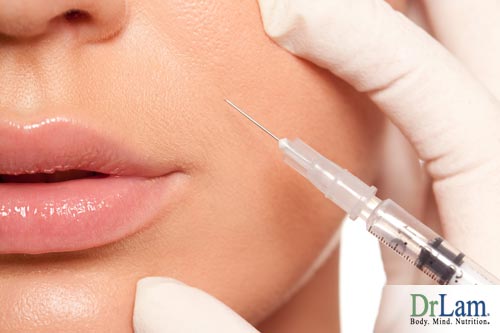 Vitamin C is a water soluble vitamin that is a potent anti-oxidant. Vitamin C serum - a form of vitamin that can be absorbed by skin cells - is an important ingredient. Topical vitamin C is capable of controlling inflammatory responses associated with UV exposure, which is seen as the cause of damage that eventually leads to wrinkling and skin cancer. It also acts as an antioxidant and promotes collagen synthesis.
Vitamin C is a water soluble vitamin that is a potent anti-oxidant. Vitamin C serum - a form of vitamin that can be absorbed by skin cells - is an important ingredient. Topical vitamin C is capable of controlling inflammatory responses associated with UV exposure, which is seen as the cause of damage that eventually leads to wrinkling and skin cancer. It also acts as an antioxidant and promotes collagen synthesis.
A natural form of Vitamin E, tocopherol acts as an antioxidant to reduce free radical damage released from pollution, stress, and modern day diet. It is very effective in combating the lipid peroxidation effect of sun damage and environmental pollution. Vitamin E, together with green tea and chamomile, are also popular soothing ingredients used to assuage the effects of acid-induced exfoliation.
See below for a more detailed description.
In addition to topically applied anti-oxidants listed above, oral intake of the optimum level of antioxidants will fortify the skin cells internally.
The skin is constantly fighting a battle between pro-oxidants, such as free radicals, and antioxidants, which the body makes. Unfortunately, the amount of antioxidants your body produces to fight these pro-oxidants is generally insufficient. A diet rich in antioxidants will help. However, fortifying the body with oral supplementation will further reduce the aging effects of oxidants commonly found in our environment, which include the sun's rays, pollution, poor diet, and stress.
The optimal level of oral intake of basic anti-aging vitamins should include:
The skin is one of the key ways our body eliminates waste (the lungs and kidneys are the other ways) after being processed by the liver. Excessive toxins will accumulate in our body, some of which are deposited on the skin in the form of pigments, fats, and other pathologies.
In addition to the topical application and oral intake of optimum amount of antioxidants mentioned above, it is important to rid the body of toxins built up through the years. You will notice that people whose body is detoxified generally have healthier and younger looking skin. This is no accident.
Detoxification is therefore a key element in restoring youthful skin. Some natural herbs and nutritional factors specific for detoxification include:
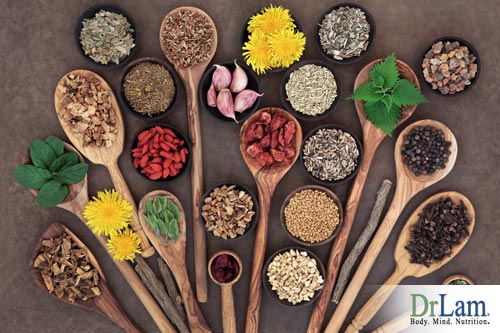 Herbal Teas. Accumulation of unwanted food particles in our digestive system is a major source of toxins. Promotion of colon cleansing through loosening the bowl movement on a regular basis is an important component of any detoxification program. This can be accomplished through the use of teas, powders, extracts, or enemas. Herbal teas can be made and consumed readily throughout the day, as they are mild and gentle. As there are different styles in preparing teas, experimentation may be done until finding a suitable tea. Cleansing powders are usually encapsulated to ensure easier swallowing. They are best taken with meals and digestive enzymes. On the other hand, herbal extracts may be used when certain herbs are needed. However, herbal extracts with alcohol content should be avoided.
Herbal Teas. Accumulation of unwanted food particles in our digestive system is a major source of toxins. Promotion of colon cleansing through loosening the bowl movement on a regular basis is an important component of any detoxification program. This can be accomplished through the use of teas, powders, extracts, or enemas. Herbal teas can be made and consumed readily throughout the day, as they are mild and gentle. As there are different styles in preparing teas, experimentation may be done until finding a suitable tea. Cleansing powders are usually encapsulated to ensure easier swallowing. They are best taken with meals and digestive enzymes. On the other hand, herbal extracts may be used when certain herbs are needed. However, herbal extracts with alcohol content should be avoided.1. Chemical Peel. There are a variety of natural or synthetic agents such as alpha-hydroxy fruit acids that can be used for chemical peels. This has been a popular procedure since the late 1980s. Chemical peels vary greatly from the popular "lunch time" peel that lasts only 20 minutes to in-hospital stay that last up to 10 days. One commonly used peeling agent is alpha-hydroxy acid (AHA) - a group of exfoliants derived from fruit, sugar, and milk acids. While it has been used for decades by dermatologist, mass commercialization has only occured since 1992, with glycolic acid being the first one. AHA has a small molecular size and thus can penetrate the skin deeply. Glycolic acids can irritate the skin and cause significant irritation. Prolonged use of AHA has not been fully researched. Some studies are pointing that chronic use of AHA may actually accelerate skin aging. At up to 10 percent concentration and final formulation pH of greater than 3.5, AHA is generally considered safe for daily application for the medium term. In a clinical setting, glycolic acid of up to 50% is used for peeling. Often the acid is left on the face for a very short period of time (within a few minutes) as it can cause severe burning if not carefully monitored.
2. Laser Resurfacing. In laser resurfacing, sometimes called "laser peel," a carbon dioxide (CO2) laser is used to remove areas of damaged or wrinkled skin, layer by layer. Lasers are named according to the source that creates the energy beam.
All resurfacing treatments work essentially the same way. First, the outer layers of damaged skin are stripped away. Then, as new cells form during the healing process, a smoother, tighter, younger-looking skin surface appears. Laser resurfacing is a new method being used by plastic surgeons to remove damaged skin.
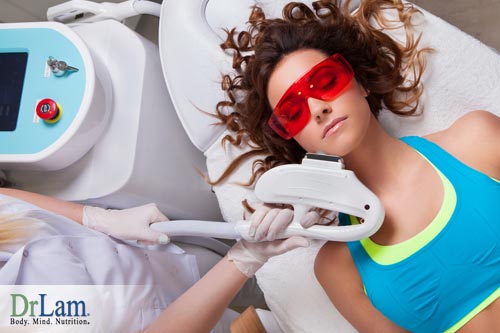 The procedure is most commonly used to minimize the appearance of fine lines, especially around the mouth and the eyes. However, it is also effective in treating facial scars or areas of uneven pigmentation.
The procedure is most commonly used to minimize the appearance of fine lines, especially around the mouth and the eyes. However, it is also effective in treating facial scars or areas of uneven pigmentation.
There are no standard measures for scar improvement or patient satisfaction, but the procedure is up to 90% effective and is more precise than dermabrasion, in which a rough, abrasive edge is used to remove scars, and chemical peels, in which chemicals remove layers of skin to remove scars.
Risks associated with laser resurfacing include: burns or other injuries from the heat of the laser energy, scarring, and obvious lightening or darkening of the treated skin. Also, laser resurfacing can activate herpes virus infections ("cold sores") and, in rare cases, other types of infection. Patients with olive skin, brown skin, or black skin may be at increased risk for pigmentation changes no matter what type of resurfacing method is recommended. Individuals who have taken Accutane in the past 12-18 months are prone to abnormal (keloid-like) scarring. In addition, individuals with active skin infections on the treatment area may not be appropriate candidates for this procedure.
3. Botox. Botulinum A Toxin (BoTox) is a medical protein derived from the C. Botuluinum bacteria under special laboratory conditions. When BoTox is injected into a muscle, it causes temporary (months) paralysis of that muscle. It has been safely used for many years in the treatment of eyelid spasms and eye muscle spasms (that can cause crossed eyes) and for the correction of facial muscle imbalance and neck muscle spasm.
Hyperactive facial muscle around the eyes and lower forehead may give a person an angry, tired, or displeased appearance - even when they are not experiencing that emotion. Inactivation of these small muscles reduces this undesirable effect and decreases the propensity to form wrinkles from these expressions. The cords or bands that protrude from the neck with the aging process may require surgery. However, certain patients can get significant improvement in these bands using BoTox therapy.
Cosmetic uses of Botulinum A Toxin include:
The procedure requires physician's intervention and repeated injections. Periodic re-injections may be required to have sustained effect.
4. Interstitial filling of collagen, silicon, or hyaluronic acid by injection into the skin. In selected cases, this should be considered. Great skill is needed, and the result may not be sustained, especially among those whose skin is undergoing very active biodegradation. One particular concern is the question of long term side-effects, especially as it relates to auto-immune diseases that may surface decades later due to the injection of such a "foreign body" into the skin.
The cost of such procedures are usually expensive. Topical application of collagen onto the skin has been tried for many years. While this method is convenient and has been heavily promoted, the fact remains that the collagen molecule itself is too large for it to penetrate the skin. Such regimens do not produce results and have largely been abandoned.
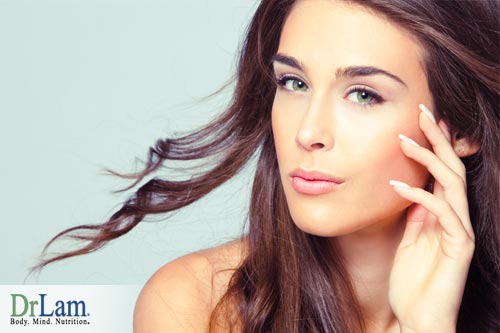 While you may not be born with perfect skin, you can certainly do your best to preserve what you have. Skin is the largest organ of the body. Young and healthy skin is filled with collagen and is well hydrated. It has not been subjected to free radical attacks from the environment.
While you may not be born with perfect skin, you can certainly do your best to preserve what you have. Skin is the largest organ of the body. Young and healthy skin is filled with collagen and is well hydrated. It has not been subjected to free radical attacks from the environment.
The scientific approach to youthful skin therefore should incorporate the following 3 elements concurrently for maximum effectiveness:
© Copyright 2012 Michael Lam, M.D. All Rights Reserved.

